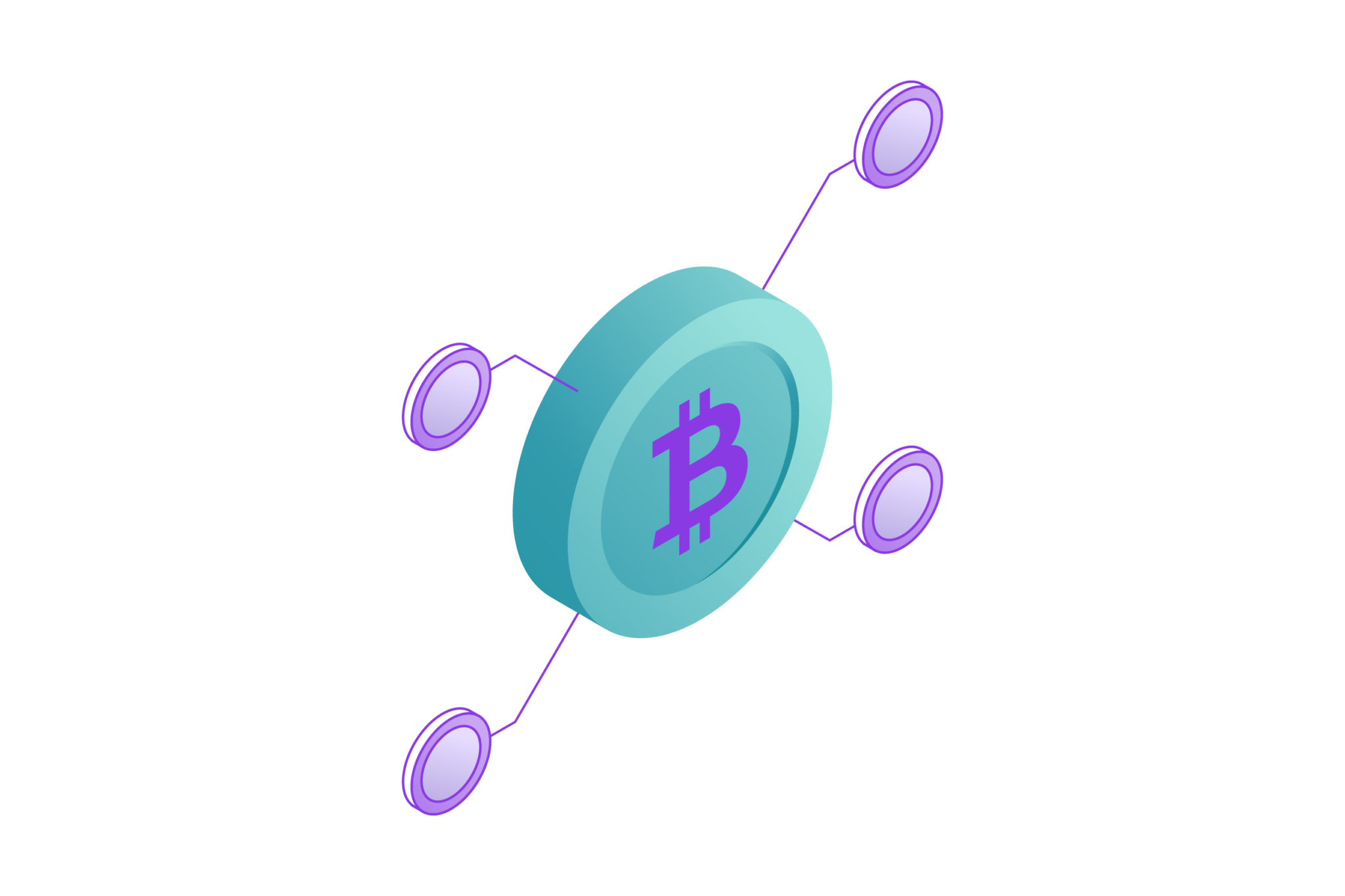
The Crypto world is growing fast, with Second-Generation coins such as stablecoins taking center stage in the dynamic ecosystem. In the dynamic world of the cryptocurrency universe, stablecoins become integral parts of the constant change and evolution. From this position, they have proven to be pivotal in their role of acting as a trustworthy connection between the turbulent cryptocurrency world and a more stable regular financial system.
Designed to hold a constant value, stablecoins act as liquidity windows that allow for hassle-free transactions, provide efficient means of value transferability, and thus serve as a platform to store value in the world of cryptocurrencies. This equilibrium does not only allure individual customers in search of the kind of solution that gives them a more stable way of making payments but also appeals to corporations and organizations interested in finding out how blockchain technology can revolutionize their operations. In contrast to regular cryptocurrencies, like Bitcoin and Ethereum whose values can sometimes vary significantly, stablecoins are created with a sustained value in mind, linked either to actual fiat currencies such as the US Dollar or other assets.
The Need for Stablecoins

The cryptocurrency market is highly scalable by nature, which presents a challenge for investors and businesses. This uncertainty in pricing has created skepticism among potential adopters of these tokens who are looking to hedge on a stable medium relative to the known traditional crypto assets. A pragmatic solution arises in the form of stablecoins that are supposed to tackle this phenomenon directly by being linked to assets that have relatively stable prices.
The name that has been given to the stablecoins implies stability, which means that these coins focus on stability and provide users with a safe medium of exchange and a form of savings. Unlike the more volatile ones, stablecoins may present more of a stable value pitch, enveloping users from the wild price swings that are representative of the larger cryptocurrency world. Their intrinsic stability as a characteristic makes them selected by people and companies trying to limit themselves to the market dynamics roller coaster ride.
Another great strength that the stablecoin has is the fact that it merges the powers of two worlds, a world of reliability and, to an extent, efficiency in blockchain technology, as well as maintaining an almost constant value. This has far-reaching implications in terms of transactions, where supporters of cryptocurrencies use them to transact without the perpetual fear of value loss during the process. Consequently, stablecoins present the way to fill the gap between the crypto world and financial stability and make cryptocurrencies more compatible with the traditional economy.
In addition, stablecoins can function as a way for other people or individuals to have access to cryptocurrencies. The inherent stability presented by such coins has the appeal of being a golden path for newcomers to trod on their way in the crypto space, as opposed to the fickle nature prevailing regarding some of their digital peers. This improved accessibility can possibly bring about a wider adoption of cryptocurrencies in day-to-day life.
As a conclusion to this, it is crucial to point out that stablecoins form a practical mitigating asset to the volatile nature of cryptocurrency trading. By providing this stable and constant value, they provide a more standard savings instrument to the users, opening up doorways to the larger adoption of blockchain technology, which can be used in mainstream financial systems.
Types of Stablecoins

Types of stablecoins are different and rely on specific mechanisms to sustain their stability. Learning about these types contributes to awareness of various methods that were applied to attain price stability in the unstable realm of cryptocurrencies.
– Fiat-Collateralized Stablecoins
The first category that is considered fundamental is fiat-collateralized stablecoins, which rely on traditional fiat currencies such as the US Dollar, Euro, or others to have their value tied to a digital underlying asset. These stablecoins operate based on a radically simple principle – for every unit of the stablecoin in circulation, a corresponding amount of fiat currency is held by the issuing entity. Tether (USDT) exemplifies this model, where the issuer claims to hold US Dollars in a 1:1 – ratio with the USDT that is in circulation. This direct peg with fiat gives users a feeling of familiarity and steadiness because stablecoin’s value is the same as for well-known national currencies. Yet, despite their relative stability, critics point to the centralized nature of these stablecoins as a limitation given the possibility of transparency and auditability since users have to trust that there are corresponding fiat reserves with the issuer.
Many users stumble upon the fairy-collateralized stablecoins as the vehicle for entering the cryptocurrency world. It gains entry to new users by means of a direct connection to familiar currencies, which reduces the learning curve and gives a relatively stable on-ramp to those who might be tepid toward the overall volatility associated with crypto as an asset class. But the need for centralized entities to vouch for token issuance raises doubts about some of the decentralization principles that many cryptocurrencies are based on, highlighting the ongoing discussion in the crypto space over stability and decentralization tradeoffs.
– Crypto-Collateralized Stablecoins
Crypto-collateralized stablecoins operate via a different economic model as they base their market value on other cryptocurrencies. Instead of resorting to classical fiat, these stablecoins boast an entrenched base of digital assets that preserve their stability. DAI under the MakerDAO is one of the best-known instances in this category, where Ethereum locks up as collateral with a goal to support the valuation of DAI. The over-collateralization mechanism functions as a shock absorber, mitigating the volatility of cryptocurrencies and thereby maintaining the stability of the value associated with the stablecoin. Thematically, this approach falls in line with the concept of decentralization that underpins blockchain technology, but it also comes up with some new challenges, such as the management of cryptocurrency collateral and the implications of using volatile collateral.
Also Read: Market Maker Options: Definition and How They Make Money
As a result, it is argued that crypto-collateralized stablecoins provide a certain level of decentralization and transparency that their fiat-backed counterparts do not. In general, the verification of collateral can be theoretically done by users. Nevertheless, the underlying mechanisms of stability keeping and the necessity for over-collateralization lead to their own unique set of complexities. Therefore, the crypto-collateralized stablecoin space is fluid, with continuous efforts to solve these issues and find the balance between stability, decentralization and operability in real life.
– Algorithmic Stablecoins
Algorithmic stablecoins are the embodiment of this pivotal change in the setting of the vast field that is encompassed by all different types of stablecoins. They do not use bodily assets or fiat monetary units as collateral; however, smart contracts and algorithmic mechanisms allow for changes in the provision of the stablecoin in response to market price tensions. As for a good fit in the algebraic stablecoins category, Ampleforth (AMPL) should be pointed out. When there is a deviation in the price from its target, this protocol dynamically increases or decreases the supply of tokens allocated to each individual user’s wallet to maintain equilibrium. The advantage of such an approach is that it doesn’t have to be directly connected to external assets, which is good for potential decentralization and scalability. On the other hand, it brings additional complications, like user acceptance and who gets to know what is supposedly going on inside the algorithm.
However exciting algorithmic stable coins are, regulators have subjected them to quality checks because of their experimental status. There is also a level of uncertainty, as users are required to understand the inner workings of such algorithms. Code-driven mechanisms seem easy and clear in their intent and task performance but often represent completely different aspects that have nothing to do with what you expect them to perform or provide when implemented. Stability is a significant challenge, and the ongoing development and refinement of algorithmic stablecoins highlights that the crypto community understands it too well.
Future Outlook of Stablecoins

Stablecoins have a bright future as far as promises and challenges are concerned, but some digital assets ought to remain stable. The past few years have observed quite a few developments, as well as numerous rising trends defining the path that might emerge regarding stablecoins.
1. Broader Adoption and Integration
Stablecoins’ future perspective seems to be the scenario of an environment where such assets mold into important components within mainline financial sectors. The stablecoins’ built-in stability makes them a medium of exchange, store of value and unit of account that are the resultant, which acts as a solution to the problem surrounding concerns about volatility that were seen as the principal hindrance to adoption of cryptocurrency.
With the increase in the maturity of blockchain technologies and an improvement in user understanding, it is expected that most stablecoins will largely become utilized for everyday transactions like remittances through digital payments. Also, developers may be willing to use more stablecoins on DeFi platforms and thus provide financial exercises that are distinctive without the limitations of centralized systems. This wider spread, however, does more than further increase financial inclusion but also establishes stablecoins as the bedrock of a developing, future financed world.
2. Central Bank Digital Currencies (CBDCs) and Government Issued Stablecoins
The design, development and implementation of Central Bank Digital Currencies (CBDCs) is likely to be an act of fusion between blind governments digital currencies, such as CBDCs and price-stable stablecoins. Private stablecoins offer efficiency, accessibility and programmability in a way that CBDCs can’t match because these are controlled by the sovereignty of a nation’s currency. This combination of these two models creates opportunities that may allow users to make choices after having noticed their qualities and scenarios.
Also Read: Market Making: Strategies and Techniques
Governments would realize certain benefits from the stability created in digital transactions and reserve some of these insights for perhaps further enriching the features of their CBDCs. Such cooperation might serve as the gateway for interoperability between private stablecoins and CBDCs, thereby creating a digital money atmosphere that infuses the merits of both public and private bodies in striving to provide levels of financial innovation. While this coexistence is likely to continue, it will certainly involve regulatory concerns and a successful partnership between public agents and private corporations.
3. Technological Advancements
Stablecoins must also be inextricably bound to the next leg of development and evolving tech ecosystems related to blockchain smart contract capabilities. With the test of time, scalability concerns will be resolved, and this will make the stablecoins more efficient due to better acceptance. For each project, the only requirement is the location of a tree and some wood. This will be facilitated by the emergence of smart contracts, which will act as a key player in devolving more complex financial products and automated processes.
Such significant improvements in programmability could result in innovativeness, such as self-executing financial agreements, reducing the use of intermediaries, and eliminating superfluous procedures. The development of new technologies for evolution will not only optimize the mechanisms that ensure stability with current stablecoins but also unlock an innovative set of models in which tech quests are always dictated by a paradigm shift.
4. Enhanced Regulatory Clarity
Coherence will be borne out of the increased regulatory clarity, as reflected in Markoff’s conclusion that from market to consumer risk settings, market systemic risks rise, which is based on a divide. Regulators are also actively interacting with the industry and want to find a fair but harmonious coexistence between innovation and financial stability. Less ambiguous regulation will most definitely create a more secure environment for stablecoin projects and ensure institutional support, as opposed to the current conditions.
Growth in regulatory clarity can cause the emergence of standards, best practices and rollouts for compliance, which may help build adoption among users. Stablecoins can develop in a long-term manner only with the adoption of comprehensive regulatory frameworks dealing with problems like AML, KYC and market transparency. Integration into traditional financial systems should be conducted not in breach of rules but in a secure way. Moreover, as regulatory certainty continues to increase, there may be more traditional financial institutions entering into the stablecoin act, which is coined for its ability not to pursue huge price swings of currencies.
5. Innovation in Stablecoin Models
The technologies that create stablecoins are not yet entirely legally enshrined, but more innovation should be expected in the future. As a result, the characteristic modus operandi for stablecoin projects will necessarily be one of mixed approaches that seek to strike a balance between these two factors while mitigating limited scale warfare and decentralization.
The refinement of algorithmic stable coins can be observed as developers attempt to perfect their mechanisms and make them more adaptable to price fluctuations, in particular. The continuous search for new models and mechanisms proves the flexibility and innovativeness of the area, even while being stable. This is with a view to providing users with more solid solutions as they grow over time. As stablecoin use proliferates, the variety of available models will also ensure a more durable ecosystem that serves diverse user requirements.
Conclusion
All the current innovations that take place in the stablecoin niche will change something and reimagine a new future of global finance. Although not completely in direct correlation with decentralization and financial inclusion, for now these digital assets seem to fit into the overall narrative of decentralization—they seamlessly blend with various other types of digital transactions, enabling a broader adoption of this superheated concept. As new technologies continue to develop in the market, such as decentralized finance, or DeFi, it only enriches the significance of stablecoins even more—users get a rare opportunity to enjoy an array of financial tools without conventional limitations. With the development of blockchain protocols and smart contracts due to technological growth, the stage is set for stablecoins to become ever more central in automated financial operations, a process that increasingly reinforces their standing as fintech drivers.
In addition, the dynamics inherent in the relationship between private stablecoins and the emergence of Central Bank Digital Currencies (CBDCs) pave the way for an intricate financial reality that sees both public and private domains having a hand in architecting monetary tomorrow. Although issues, specifically in the regulatory scope, continue to exist, stable coins still appear to be evolving against the background of expected welfare in terms of financial efficiency and transparency. In fact, it becomes more evident that stablecoins do not merely exist as instruments for monetary stability but as seeds that promote a financially connected, accessible and digital future. Driving such a trajectory, stablecoins were one of the most important forces that opened the door for digital currencies to further establish ties between traditional and online economies while signalling a new era in global finances.
Disclaimer: The information provided by Quant Matter in this article is intended for general informational purposes and does not reflect the company’s opinion. It is not intended as investment advice or a recommendation. Readers are strongly advised to conduct their own thorough research and consult with a qualified financial advisor before making any financial decisions.
I craft stories that make complex ideas clear. I simplify the blend of data science, machine learning, and crypto trading, showcasing how advanced tech and quantitative models analyze data for informed trading choices. Join me in exploring the realm of quantitative trading, where my narratives make intricate concepts easy to grasp.
-
Alifia Berizkyhttps://quantmatter.com/author/alifia-berizky/
-
Alifia Berizkyhttps://quantmatter.com/author/alifia-berizky/
-
Alifia Berizkyhttps://quantmatter.com/author/alifia-berizky/
-
Alifia Berizkyhttps://quantmatter.com/author/alifia-berizky/

